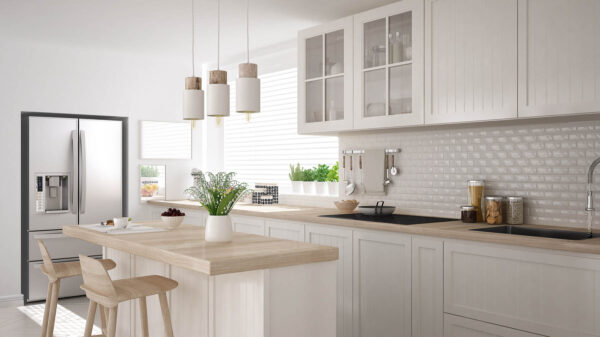In an era of increased awareness about environmental impact and sustainability, the realm of cabinetry is undergoing a transformation. The concept of “green cabinetry” is emerging as a powerful trend, offering homeowners the opportunity to make eco-conscious choices while enhancing the beauty and functionality of their living spaces. Green cabinetry isn’t just about aesthetics; it’s a commitment to sustainable materials, responsible production processes, and a healthier planet. In this in-depth exploration, we delve into the world of green cabinetry, uncovering the benefits of eco-friendly practices and the allure of sustainable materials that contribute to a greener and more beautiful home.
The Essence of Green Cabinetry
Green cabinetry embodies a harmonious relationship between design and nature. It’s a celebration of responsible sourcing, ethical manufacturing, and a reduced carbon footprint. Green cabinets are crafted with the intention of minimizing environmental impact while maximizing style, durability, and functionality.
Sustainable Materials: Nurturing Nature
One of the cornerstones of green cabinetry is the use of sustainable materials. Instead of depleting finite resources, green cabinets are often crafted from renewable materials like bamboo, reclaimed wood, or rapidly renewable materials like cork. These materials not only minimize the strain on the environment but also bring distinctive textures and visual appeal to your space.
Eco-Friendly Production Processes: Crafting with Care
Green cabinetry goes beyond the materials used; it extends to the production processes themselves. Manufacturers committed to eco-friendly practices embrace energy-efficient production methods, water-saving technologies, and waste reduction strategies. By making conscious choices at every stage of production, green cabinet manufacturers contribute to a healthier planet and a more sustainable future.
VOC-Free Finishes: A Breath of Fresh Air
Traditional cabinets often use finishes that emit volatile organic compounds (VOCs), contributing to indoor air pollution. Green cabinetry, however, champions the use of low-VOC or VOC-free finishes that are safer for both your family’s health and the environment. These finishes don’t compromise on aesthetics or durability while reducing your home’s carbon footprint.
Durability and Longevity: A Testament to Sustainability
Sustainability is deeply intertwined with longevity. Green cabinets are crafted to withstand the test of time, reducing the need for frequent replacements. By investing in high-quality materials and meticulous craftsmanship, green cabinetry supports a circular economy where items are cherished and preserved rather than discarded.
Energy-Efficient Hardware: Illuminating Efficiency
Green cabinetry extends its eco-conscious approach to hardware as well. Energy-efficient lighting options, such as LED under-cabinet lights, minimize energy consumption while providing ample illumination. These small yet impactful choices contribute to a more energy-efficient and sustainable kitchen or living space.
Certifications and Labels: Navigating the Green Landscape
Navigating the world of green cabinetry is made easier through certifications and labels that indicate a commitment to sustainability. Look for certifications like Forest Stewardship Council (FSC) certification, indicating responsible wood sourcing, or Greenguard certification, which ensures low chemical emissions in materials.
Elevating Design with Purpose
Green cabinetry is more than a trend; it’s a movement toward responsible design that considers the planet’s health and the well-being of future generations. By choosing sustainable materials, embracing eco-friendly production processes, and investing in durability, you’re not only enhancing the aesthetics of your home but also contributing to a brighter and greener world. As you explore the world of green cabinetry, you’ll discover that making eco-conscious choices doesn’t mean compromising on style or functionality. Instead, it means creating spaces that are as beautiful on the inside as they are on the outside, reflecting a commitment to sustainable living.





